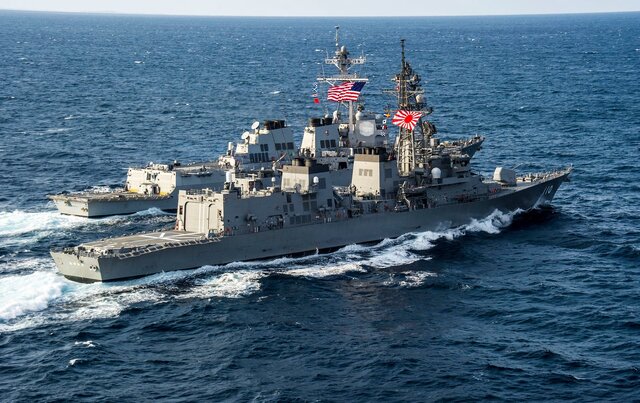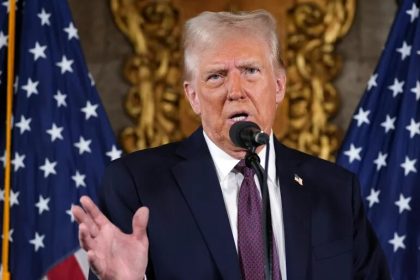The challenges of the US allies in the indonopasophile
The United States has been challenged in Europe and in the Indianifics, and now Trump has to provide a coherent approach to US alliances, as the US Navy’s military capability seems to be insufficient to confront China.
According to RCO News Agency, in an article referring to the long -standing tensions between Washington and Beijing, British media reported that US President Donald Trump should adopt a coherent and coherent policy towards China, otherwise his allies in the Indo -Pacific.
On the eve of the US presidential election, it was quite clear that Trump would accelerate the existing geopolitical changes in his second term; But he has begun to work faster than existing forecasts, and has not been almost a week to see a new disruption to common norms or unprecedented changes in international relations.
“The most obvious example is Trump’s turn from Ukraine to Moscow, which has created significant challenges for Europe and security structures, including NATO,” the report said. The telegraph has also cited challenges that US allies have faced in the Industry region, as the latest signs of “American peace” in the world have replaced Trump and the “Grand America” plan.
Former British Foreign Intelligence chief Alex Yanger says the international order based on rules has replaced a new era of transactions led by Shi Jinping, Vladimir Putin and Trump. Although Trump’s positions are apparently designed to revitalize economic prosperity, autonomy and resilience of the United States, it does not pay much attention to the interests of the other party, and in the medium and long -term, the risk of collapse of alliances and partnerships that provide US strategic interests.
China’s submarine in the South China Sea
Military deterrence toward China
“Although Trump has sometimes threatened to destroy his enemies, he seems to have preferable to severe economic and political pressures,” he said, noting that Trump’s closest consultants today have identified China as the biggest threat to American interests. “However, his explicit desire to increase the dimensions and power of the US Navy shows that his strategy for China also includes military deterrence.”
According to the Telegraph, the United States is displaying its maritime power around the world through its strategic maritime bases, and aircraft carrier groups supported by offensive submarines are a key component of this strategy. The US Navy regularly conducts important strategic exercises with partners such as South Korea, Japan and the Philippines.
However, these activities are increasingly challenged by China. China’s offshore capabilities in open water are still not advanced, but Beijing has offset this weakness by increasing the number of warships and some advanced weapons systems, while China also has good nuclear and nuclear missile capabilities. The telegraph reports that China uses fishing ships and other civilian vessels in some operations, reported that it has four large military shipbuilders with a capacity of more than 5 times the United States.
According to the report, China is rapidly increasing its readiness to counter the United States and its allies by strengthening technical, nuclear and marine capabilities. It has given a special priority to new drone technologies and has taken advantage of the Ukrainian war experiences. According to the US media, none of the Western countries have yet to achieve China’s capability in the intelligence and cognitive war.
Beijing in the short term is to show power in the South China Sea and to limit US adventures in Asian waters. In addition, the development of the Chinese submarine fleet has made it possible to exercise its power in the Pacific. “US war simulations have shown that in the event of a regional war with China over Taiwan, the reserves of precise US guided missiles will not last even a week,” the report said.

US and Japanese ships
Gap
In its program for the year, the US Navy has set goals for a significant expansion of the naval fleet. However, the timing of the new ships is long, the budgets are limited, and it is unlikely that the day of possible conflict between the US and China will take a sudden and significant progress in US offshore capabilities.
“For this reason, the US government is highly motivated to buy new vessels from its regional allies in indocopic, countries that have mutual defense agreements with Washington,” the Telegraph writes. “Japan and South Korea, which have one of the world’s largest shipbuilding capacities, can meet that need.”
But such arrangements will only be successful if it is created within the framework of a regional and global strategic alliance; So if the US allies do not trust the country, even the current multilateral obligations, such as the Akchus Treaty, will be in trouble.
On the other hand, the Telegraph writes that if Trump’s desire to expand relations with Beijing, not only China will not accept this proposal – at least – but also to the credibility of its allies, as any agreement with Beijing will probably include the issue of Taiwan. In that case, “no country that depends on US weapons or other Washington support can no longer trust US guarantees.”
The British media eventually warns the US government that the gaps and concerns in the Indianpacific region will rise in the Indo -Pacific region unless it is formulated in a coherent way, and this is not in Washington’s interest.
The end of the message
(tagstotranslate) America (T) NATO (T) Donald Trump (T) China (T) South China Sea
News>RCO NEWS
RCO
















